
The Ultimate Guide to Finding Lysol Brand SDS Documents
Understanding Lysol Brand SDS Documents for Workplace Safety
If you're looking for Lysol brand SDS (Safety Data Sheet) documents, here's what you need to know:
- Access Point: Visit the manufacturer's website (Reckitt Benckiser) or contact them directly at 1-800-338-6167
- Purpose: SDS documents provide detailed safety information for workplace and emergency personnel
- Content: Contains 16 standardized sections including hazards, composition, first aid, and handling instructions
- Important Note: Consumer usage instructions are on product labels, while SDS are specifically for workplace settings
Lysol brand SDS documents are technical safety guides required by OSHA that provide comprehensive information about potential hazards, handling procedures, and emergency response measures for Lysol disinfectant products. Unlike the consumer-focused instructions found on product labels, these documents are specifically designed for workplace employees, emergency personnel, and situations where there might be prolonged or large-scale exposure to the product.
I'm American Mortuary Coolers, a national supplier of mortuary refrigeration equipment with extensive experience handling chemical safety documentation, including Lysol brand SDS, in funeral home and mortuary settings. Our expertise helps funeral directors maintain regulatory compliance while ensuring proper disinfection protocols in sensitive environments like preparation rooms and coolers.
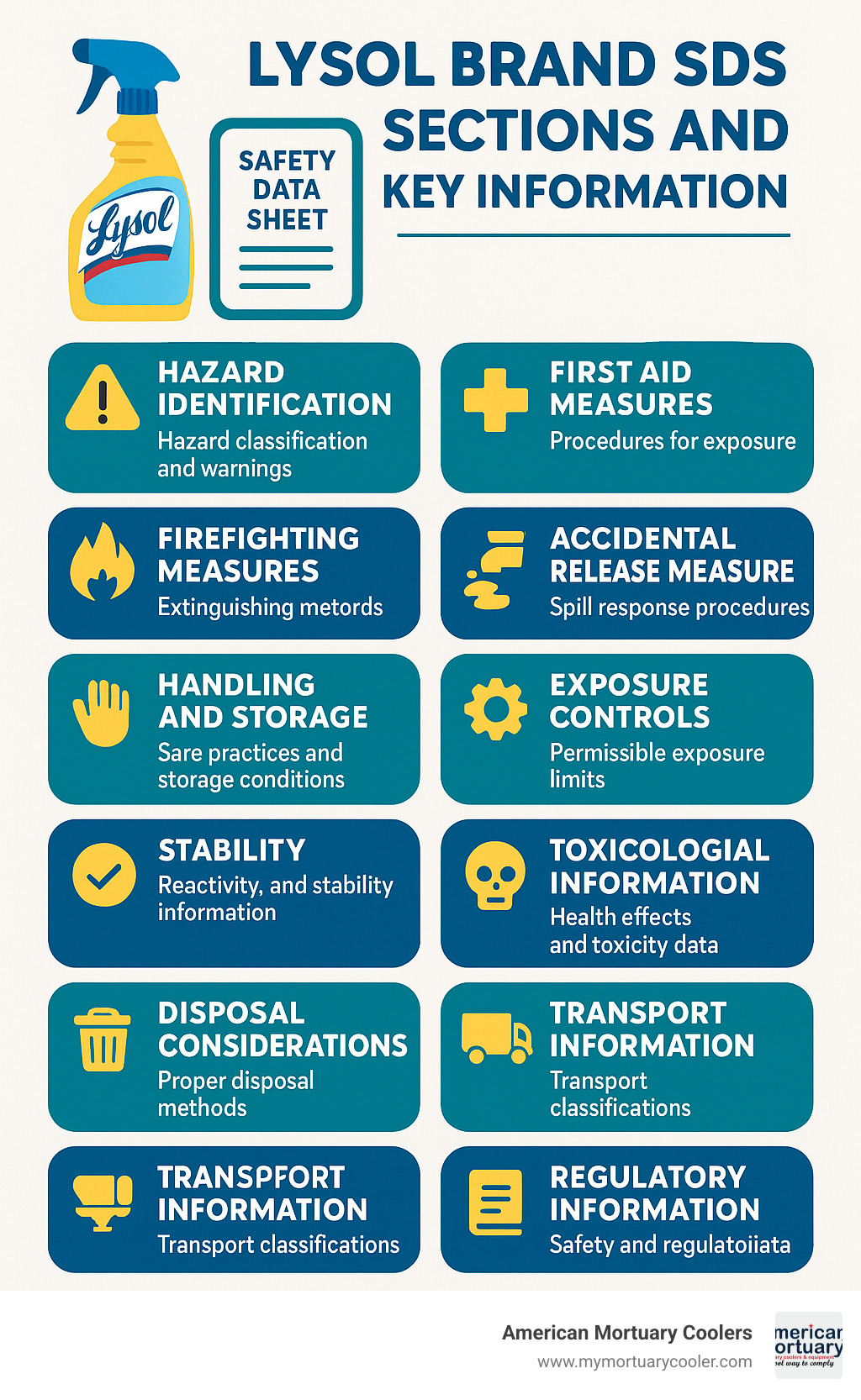
What Is an SDS and Why It Matters for Lysol Products
Ever wondered what that technical document is that comes with cleaning products? Let's explain the Safety Data Sheet (SDS) for Lysol brand products - those essential papers that might seem boring but actually help keep everyone safe when using disinfectants in workplace settings.
Think of an SDS as the "behind-the-scenes manual" for chemical products. While the regular product label tells you how to use Lysol at home, the SDS reveals the deeper details that workplaces and emergency responders need to know. OSHA requires these documents under their Hazard Communication Standard (that's 29 CFR 1910.1200 for you regulation fans), and they follow a global system called GHS that makes them consistent worldwide.
What makes a Lysol brand SDS particularly important? Well, Lysol products aren't just ordinary cleaners - they're EPA-registered disinfectants containing active ingredients that need special handling in professional settings. For example, did you know that Lysol Disinfectant Spray is actually a Category 2 Flammable Aerosol? Or that it contains pressurized gas that could potentially explode if heated beyond 122°F? That's not information you'll find on the regular label!
Every Lysol brand SDS contains exactly 16 sections:
- Product and Company Identification
- Hazards Identification
- Composition/Information on Ingredients
- First Aid Measures
- Fire-Fighting Measures
- Accidental Release Measures
- Handling and Storage
- Exposure Controls/Personal Protection
- Physical and Chemical Properties
- Stability and Reactivity
- Toxicological Information
- Ecological Information
- Disposal Considerations
- Transport Information
- Regulatory Information
- Other Information
Each section serves a specific purpose, from telling you exactly what chemicals are inside to explaining how to safely clean up a spill. It's comprehensive information designed for professional environments - exactly what you need in a funeral home setting.
How SDS Protects Users and Facilities
In our years of working with funeral homes, we've seen how valuable a Lysol brand SDS can be when properly used. These documents protect both your staff and your facility by providing details that go well beyond what's on the consumer label.
For instance, in preparation rooms where disinfection is critical, knowing the specific hazards matters. The Lysol Disinfectant Spray SDS tells you it has a flash point of 65.5°F - important information when you're working with electrical equipment or other potential ignition sources. It also warns about eye irritation (technically Category 2A, which means serious irritation) so you know to have eyewash stations nearby.
While Lysol is perfectly safe when used as directed, the SDS helps you understand what might happen with prolonged exposure - like respiratory irritation from breathing too much spray or skin dryness from repeated contact. This is particularly relevant in funeral service where staff might be using these products multiple times daily.
Key Lysol Product Families with Available SDSs
In our work with funeral homes across the country, we've noticed several Lysol brand products that appear frequently in preparation rooms and other areas. Here are the main product families you should have SDSs for:
Lysol Disinfectant Spray is probably the most common - those aerosol cans come in various scents and sizes (7 oz., 12.5 oz., 15 oz., and 19 oz.). The SDS reveals they contain ethanol (30-60%), butane (5-10%), and propane (1-5%), which explains the flammability warning. They're excellent for quick disinfection but require proper ventilation.
Lysol Multi-Surface Cleaner is another staple - this liquid product contains quaternary ammonium compounds (1-5%) and ethoxylated alcohols (1-5%). It's an eye irritant but not flammable, making it suitable for many surfaces in preparation rooms where you might want to avoid aerosols.
Lysol Disinfecting Wipes are particularly handy for quick cleanup - they contain ethanol (1-5%) and quaternary ammonium compounds (0.1-1%). We've seen these used effectively for smaller equipment and surfaces that need frequent disinfection.
Lysol Brand SDS: Hazards, Ingredients, First Aid & Environmental Data
When you're working in a funeral home or mortuary setting, knowing what's in your cleaning products isn't just good practice—it's essential for safety. The Lysol brand SDS documents are your go-to resource for understanding exactly what you're working with and how to handle any situations that might arise.
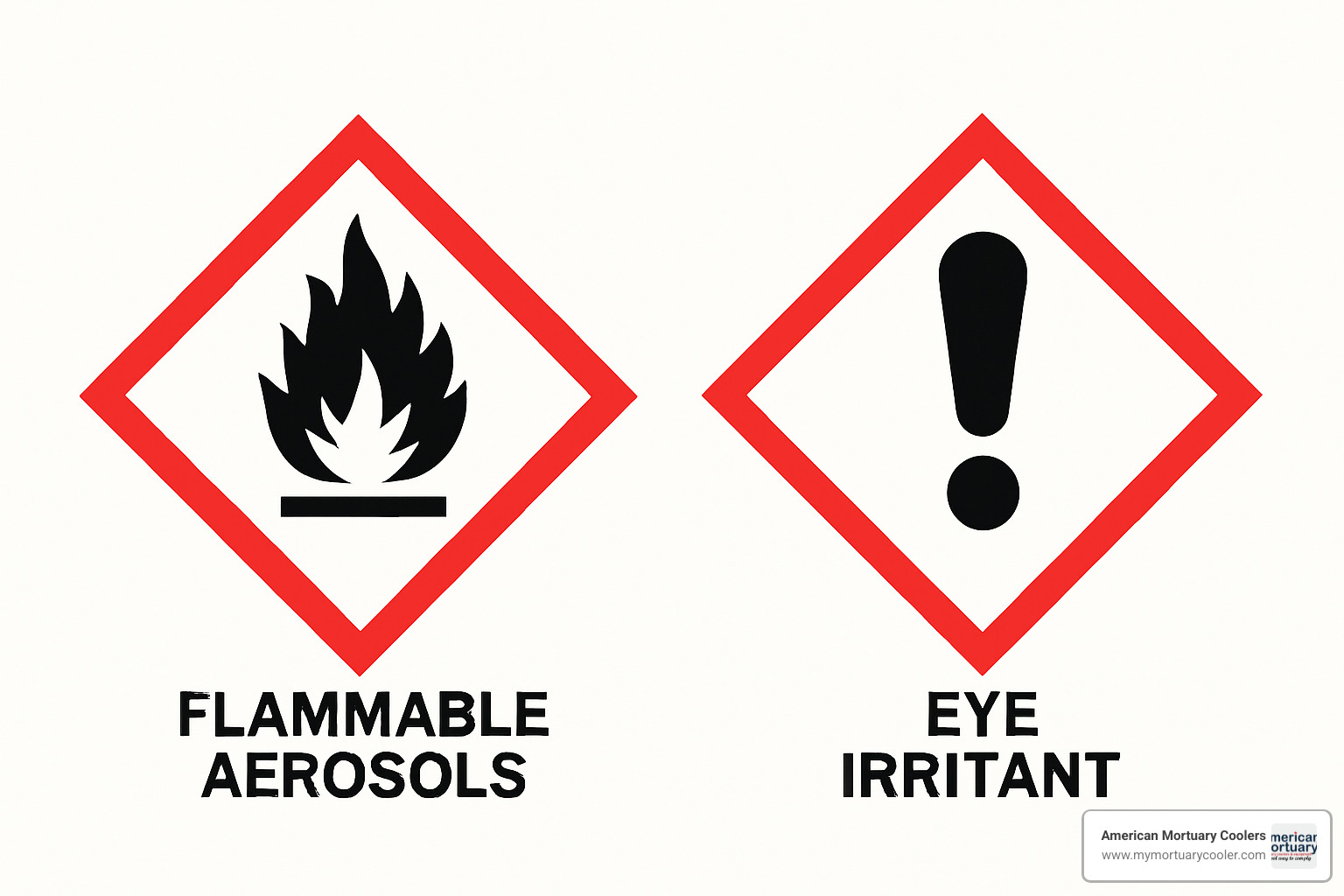
Hazards and Ingredients
Let's talk about what's actually in that can of Lysol spray you're using to disinfect surfaces. Most Lysol disinfectant sprays fall into the Category 2 flammable aerosols classification—and yes, they're under pressure, which matters when you're storing them.
The main ingredients doing the heavy lifting in these products include ethanol (30-60 %), which is your primary germ-fighter, along with butane (5-10 %) and propane (1-5 %) serving as propellants to get the product out of the can. If you're using Lysol's liquid cleaners or wipes, you'll find quaternary ammonium compounds (0.1-5 %) as the active disinfecting agents.
Those symbols on the label aren't just for decoration. The flame pictogram is a quick visual reminder about flammability, while the exclamation mark warns you about irritant properties. In practical terms, your typical Lysol product scores moderate concerns (1-2 on a 0-4 scale) for both health and flammability on the HMIS and NFPA rating systems.
Environmental Considerations
What happens to these chemicals after you've cleaned? According to the Lysol brand SDS, the environmental impact varies by product. For example, Lysol Multi-Surface Cleaner has specific aquatic toxicity measurements: Daphnia (water fleas) show effects at just 0.016 mg/L, while rainbow trout are affected at 64 ppb.
Most components are biodegradable, which is good news, though complete breakdown information isn't always available. The bioaccumulation potential is generally low, meaning these chemicals typically don't build up in the food chain.
For those of us working with funeral homes, these environmental facts matter. Local wastewater regulations can be strict, and understanding how your cleaning products interact with the environment helps ensure your facility stays compliant.
Immediate First Aid for Lysol Brand SDS Exposures
Accidents happen to even the most careful professionals. If you get Lysol in your eyes (and I've seen it happen), you'll want to rinse with water for a full 10-20 minutes. Take out those contact lenses right away if you're wearing them, and keep rinsing. If your eyes are still irritated afterward, it's time to seek medical help.
For skin contact, wash the area thoroughly with water for at least 15 minutes. Remove any clothing that got splashed, and make sure to wash it before wearing it again. If irritation develops, get medical attention.
If someone inhales too much of the product, especially in poorly ventilated areas, move them to fresh air immediately. For serious breathing difficulties, oxygen or artificial respiration might be necessary, followed by a call to poison control.
In the rare case of ingestion, don't induce vomiting unless medical professionals direct you to. Instead, rinse the mouth with water and offer small sips if the person is conscious. This situation requires immediate medical attention.
Long-Term Health Effects per Lysol Brand SDS
While immediate exposures get most of our attention, the Lysol brand SDS also covers what might happen with repeated exposure over time. Regularly breathing in spray mist can irritate your respiratory system. Frequent skin contact might lead to dryness or cracking—something we've seen happen to staff who don't wear gloves consistently.
The ethanol in many Lysol products can potentially affect the central nervous system and liver with prolonged exposure at high concentrations. It's listed as an A3 confirmed animal carcinogen by ACGIH, though this primarily relates to drinking ethanol, not using it as a disinfectant.
Most people won't develop sensitivity to Lysol products, but individual reactions can vary. For preparation rooms where ventilation might be limited, it's worth noting the occupational exposure limits: ethanol (ACGIH TLV: 1000 ppm) and butane (ACGIH TLV STEL: 1000 ppm).
Safe Handling, Storage & Disposal Essentials
Proper handling of Lysol products is straightforward but important. Always use them in well-ventilated areas—this is especially crucial in smaller preparation rooms. Protect your eyes, skin, and clothing from contact, and wear appropriate PPE when using these products regularly.
Keep Lysol products away from heat sources, sparks, and open flames. Never pierce or burn the containers, even when they're empty. And always wash your hands thoroughly after handling—a simple step that's easy to forget in a busy day.
For storage, remember the magic number: keep products below 50 °C (122 °F) and away from direct sunlight. Store them in cool, dry, well-ventilated areas with containers tightly closed when not in use. Keep them separate from incompatible materials like strong oxidizers, acids, and bases.
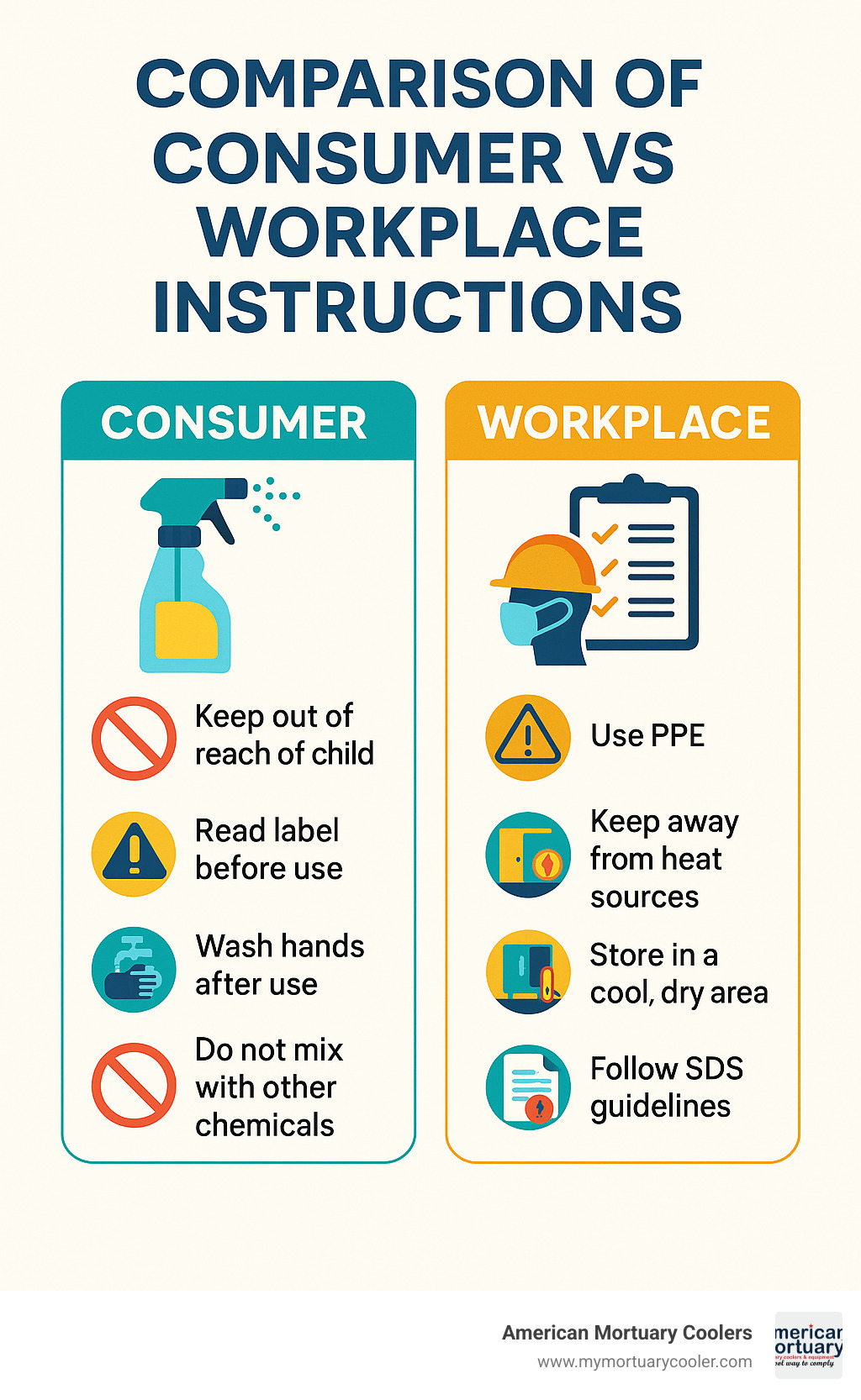
There's a big difference between using Lysol at home versus in a professional setting. The consumer label gives you the basics, but the Lysol brand SDS offers the detailed guidance you need when you're using larger quantities or facing more prolonged exposure in workplace settings like funeral homes.
Spill, Release & Transport Guidance
When a spill happens, quick action matters. First, eliminate all ignition sources—remember, these products are flammable. Stop the leak if you can do so safely, ensure good ventilation, and prevent the product from entering waterways or sewers.
For cleanup, the approach depends on the size of the spill. Small spills can be absorbed with materials like sand or vermiculite (which we recommend keeping on hand in preparation rooms). Larger spills require collection with explosion-proof pumps. Always place the collected material in properly labeled containers and arrange disposal through a licensed waste contractor.
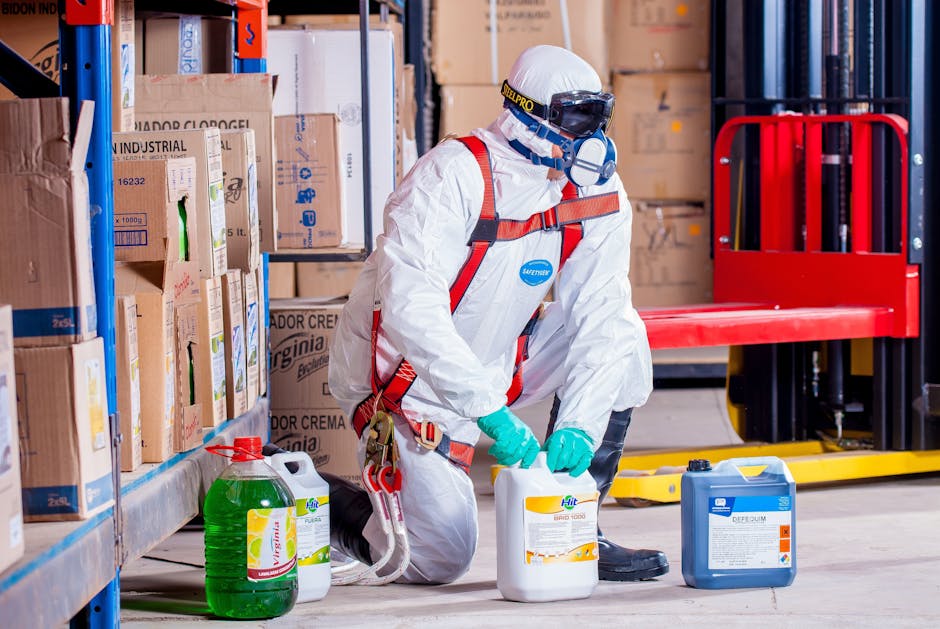
If you need to transport Lysol products, especially in larger quantities, be aware of the proper classifications. Aerosols carry the UN Number UN1950, with the proper shipping name "Aerosols, flammable" and hazard class 2.1 (Flammable Gas). Most Lysol products are not classified as marine pollutants, which simplifies some shipping requirements.
For more detailed guidance on selecting the right protective equipment for your mortuary setting, take a look at our comprehensive guide on PPE selection.
How to Locate and Download Lysol Brand SDS Documents
Finding the right Lysol brand SDS doesn't have to be complicated. Whether you're managing a funeral home or just need information for your mortuary, I'll walk you through the easiest ways to get these critical safety documents.
Manufacturer's Website
The most straightforward place to find Lysol brand SDS documents is directly from Reckitt Benckiser's website. They maintain an up-to-date database with all their product safety information. Many of our funeral home clients prefer using the SmartLabel initiative, which is essentially a digital hub where you can quickly access product information including safety data.
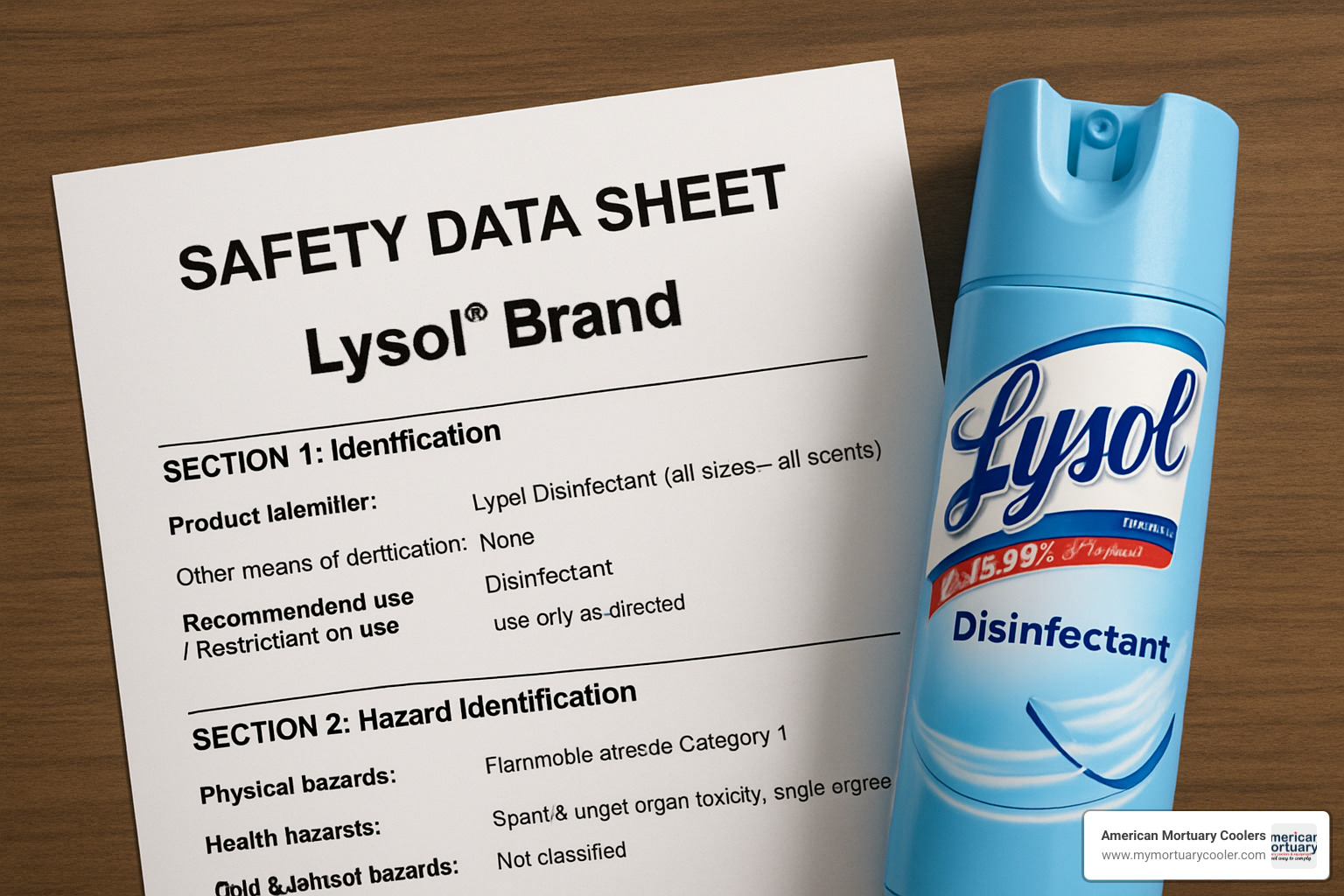
Search by UPC or Product ID
Every Lysol product comes with its own unique identifier. Think of it like a fingerprint – no two products are exactly alike. When searching for an SDS, you can use the UPC code printed on the product or look for specific EPA ID numbers in the documents themselves. For instance, Lysol Disinfectant Spray uses EPA ID No. 777-99-675, while Lysol Multi-Surface Cleaner goes by EPA ID No. 777-89.
Many of our mortuary clients keep a simple spreadsheet matching their cleaning products to these numbers – it saves tons of time when you need to quickly locate the right document.
Contact the Manufacturer Directly
Sometimes the direct approach works best. If you're struggling to find a specific Lysol brand SDS, just pick up the phone. Reckitt Benckiser's customer service team is actually quite helpful – call 1-800-338-6167 for medical emergencies. For chemical emergencies, CHEMTREC is available 24/7 at 1-800-424-9300.
Employer SDS Libraries
OSHA requires all workplaces to maintain SDS documents for hazardous chemicals. In practical terms, this means your funeral home should have a dedicated binder or digital system with current safety information for all products, including your Lysol brand SDS documents.
When we install new coolers at mortuaries, we often help clients organize their chemical safety information. We've found that keeping SDS documents close to where chemicals are stored makes a huge difference during inspections or emergencies.
Tracking Revisions
Chemical formulations change, and so do their safety documents. You'll typically find the revision date in Section 16 of any Lysol brand SDS. I recommend checking for updates at least once a year, or whenever you introduce new products to your facility.
Desktop & Mobile Access to Lysol Brand SDS Files
Having electronic access to safety information just makes sense. Here's how to keep Lysol brand SDS documents at your fingertips:
PDF Downloads make it easy to organize safety documents on your computer system. Create a simple folder structure – perhaps organized by product type or location used – so you can quickly find what you need.
Cloud Storage solutions like Google Drive or Dropbox are fantastic for multi-location funeral homes. Your staff can access critical safety information from any device, anywhere.
Mobile Access through specialized SDS apps can be a lifesaver during emergencies. Imagine being able to pull up first aid information instantly if someone accidentally gets Lysol in their eyes.
OSHA Electronic Access Rule allows digital SDS libraries as long as employees can access them immediately when needed, you have backup systems for emergencies, and staff know how to find information.
Offline Backup is something I still strongly recommend. Even with the best digital systems, power outages happen. Keep a printed copy of your most-used SDS documents, especially in preparation rooms where chemical exposures are most likely.
For more information about bringing your mortuary operations into the digital age, check out our article on Essential Embalming Equipment: Modern Solutions Explained.
External Resources for Verified Updates
Beyond the manufacturer's resources, several trusted organizations provide valuable information about Lysol brand SDS and disinfectant use:
CHEMTREC isn't just for emergencies – they're chemical safety experts who can answer questions about proper handling and storage. Their hotline (1-800-424-9300) is a resource worth saving.
EPA List N identifies disinfectants that work against SARS-CoV-2. Many Lysol products appear on this list, with specific contact times required for effective virus inactivation – critical information for mortuary settings.
CDC Guidelines provide context-specific disinfection protocols, including specialized guidance for funeral homes and mortuaries.
For the latest guidance on SARS-CoV-2 disinfection, including updated information about Lysol products, visit the EPA's coronavirus resource page.
Frequently Asked Questions about lysol brand sds
Where can I find the newest lysol brand sds for my specific scent?
Finding the right lysol brand sds for your specific scent variant can be a bit tricky. Whether you're using Lemon & Lime Blossom, Early Morning Breeze, or another fragrance, most share similar formulations and hazard profiles, but there can be subtle differences worth knowing about.
The easiest way to locate your specific scent's documentation is to grab the product and find the UPC code on the can or bottle. Then, head over to the Reckitt Benckiser website or their SmartLabel portal where you can search using this code. The exact product name including the scent will help narrow things down too.
If you're having trouble tracking down documentation for your particular scent variant, don't hesitate to call Reckitt Benckiser directly at 1-800-338-6167. Their customer service team can help point you in the right direction.
Remember to check the revision date (usually tucked away in Section 16 of the document) to make sure you're working with the most up-to-date information. Safety data gets updated periodically as formulations change or new safety information becomes available.
Do I need special PPE when spraying Lysol in a morgue cooler?
When it comes to using disinfectants in the confined space of a morgue cooler, you definitely want to take extra precautions. The lysol brand sds highlights several hazards that become more significant in small, enclosed spaces like our coolers.
For respiratory protection, I always recommend at least a NIOSH-approved N95 respirator when working in coolers with limited ventilation. If you're doing extensive cleaning that might take a while, consider upgrading to a respirator with organic vapor cartridges to better protect against the chemical vapors.
Your eyes need protection too! Since the lysol brand sds specifically identifies eye irritation as a significant hazard, chemical splash goggles are your best bet.
Don't forget about your hands – chemical-resistant gloves made of nitrile or neoprene will prevent skin contact during cleaning operations. This is especially important when you're handling disinfectants for extended periods.
Proper ventilation is crucial before, during, and after application. At American Mortuary Coolers, we design our cooling systems with ventilation in mind, but you might need additional temporary ventilation during thorough disinfection procedures.
When possible, try to schedule your disinfection routines when the cooler is empty or at minimum occupancy. This reduces exposure risks not only to your staff but also helps maintain the dignity of the remains in your care.
How do I dispose of expired Lysol aerosol cans safely?
Disposing of those expired or empty Lysol aerosol cans properly is something many funeral directors ask me about during cooler installations. Let me share some straightforward guidance on this.
Ideally, you'll want to use up all the contents as directed before disposal – this is both economical and environmentally responsible. Even when a can seems empty, never pierce or incinerate it. Those cans can contain residual propellant under pressure that could cause injury.
Local regulations vary widely on this topic. Some places classify empty aerosol cans as regular household waste, while others consider them hazardous materials requiring special handling. It's worth checking with your local waste management authority to understand the specific requirements in your area.
Many communities now accept completely empty aerosol cans in their recycling programs if the nozzle is removed. For partially full or expired cans, your best bet is to use local hazardous waste collection services.
For our funeral home clients, we typically recommend establishing a relationship with a licensed waste contractor who can provide guidance on proper disposal methods for various chemical products. Having this relationship in place also helps with other aspects of your operation's waste management needs.
Conclusion
Understanding and properly utilizing Lysol brand SDS documents isn't just about checking a regulatory box—it's about creating a safer workplace for everyone in your funeral home or mortuary. These detailed safety sheets go far beyond the basic directions on product labels, offering critical insights that can prevent accidents and ensure proper response if something does go wrong.
At American Mortuary Coolers, we see ourselves as more than just equipment providers. We're partners in helping you create a safe, compliant facility where both staff and the families you serve feel protected. Our commitment extends beyond delivering quality refrigeration systems to sharing practical knowledge about chemical safety in mortuary environments.
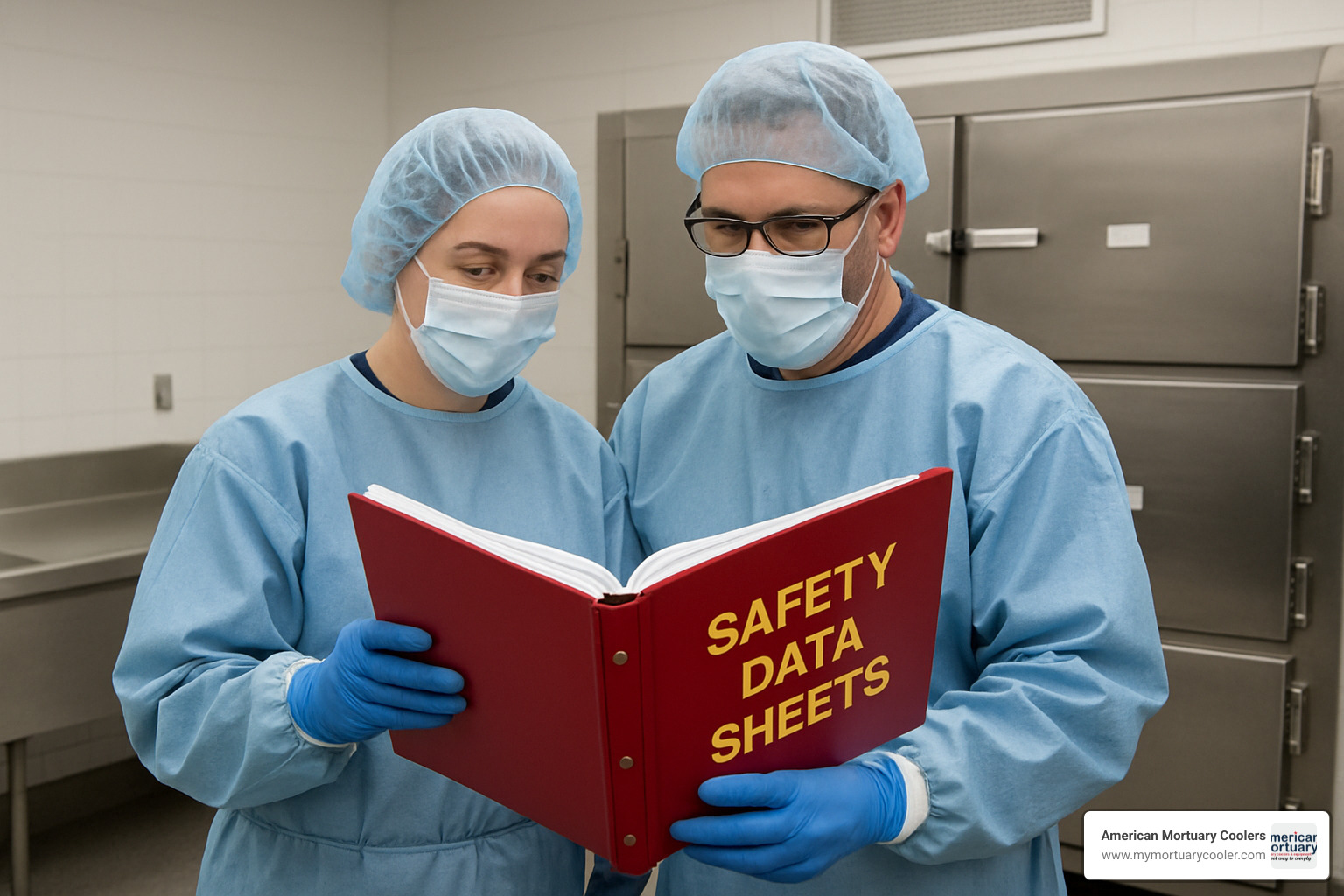
From our years working with funeral professionals, we've found that the most successful facilities integrate SDS management directly into their daily operations. This means keeping a well-organized, current library of SDS documents for every chemical product in your building—not just tucked away in a binder, but actively used and referenced. Regular staff training sessions on accessing and understanding this information can make all the difference during an unexpected exposure or spill.
Emergency preparedness becomes second nature when SDS information is readily available. Keep those emergency contact numbers visible and ensure everyone knows where to find specific product information quickly. We've seen how periodic SDS audits can catch outdated information before it becomes a problem, and how including SDS review during new employee orientation helps build a culture of safety from day one.
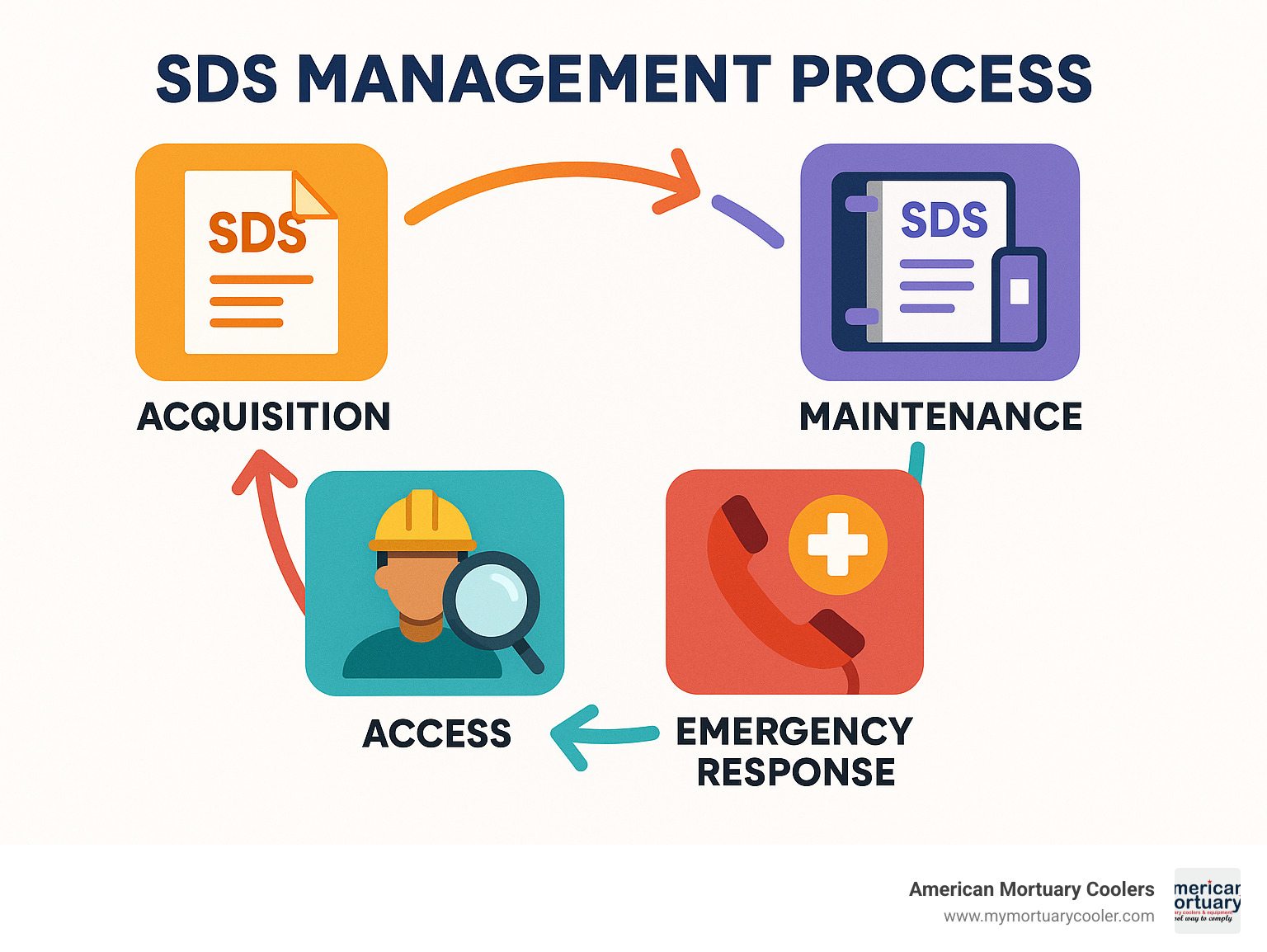
The reality is that disinfection is a fundamental part of mortuary operations, and products like Lysol play an important role in maintaining sanitary conditions. By approaching these chemicals with respect and knowledge—guided by their Lysol brand SDS documentation—you're protecting your team while still providing the highest standard of care to the families who depend on your services.
Whether you're building a new facility or upgrading an existing one, we're here to help you create spaces where safety and efficiency work hand in hand. Our refrigeration solutions are designed with these practical considerations in mind, supporting your commitment to excellence in every aspect of your operation.
For more information about our refrigeration systems and how they integrate with your overall safety planning, please visit our article on American Mortuary Coolers: The Leading Supplier of Morgue Coolers, Funeral Home Coolers, and Forensic Refrigeration Solutions.



